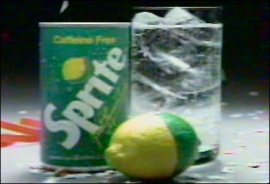Looking Backward Into the Present
Using the Popular Culture of the Past to Help Answer Perplexing Questions in the PresentArchive for lymon
Where does the term limelight come from?
I have been working on a stage play recently and ran across the term “limelight” several times. We all know that to be in the limelight, one has been seeking the spotlight of the stage or public attention. But then it occurred to me, why “limelight”? Why not lemonlight? Better yet, if you are a Sprite fan why not lymon light?
It turns out that limelight refers to the chemical reaction created when an oxyhydrogen flame is directed at a cylinder of calcium oxide, commonly referred to as lime.
According to The Hydrogen Age, a book by Geoffrey Holland and James J. Provenzano, the limelight effect was developed in 1826 by English chemist Goldsworthy Gurney (how’s that for a name!) and developed into a working light by Thomas Drummond.
“The result was a brilliant bright incandescence that Drumond soon adapted for use in lighthouses because it remained visible fifty or more miles distant. Within a few decades limelight was also lighting stage performers in theaters and music halls across Europe and America.”
According to the Wikipedia entry on limelight,
“Limelight was first used in the Covent Garden Theatre in London in 1837 and enjoyed widespread use in theatres around the world in the 1860s and 1870s. Limelights were employed to highlight solo performers in the same manner as modern followspots. To this day, theatre followspots are often referred to as limes. Limelight was replaced by electric arc light in the late 19th century.”
Let it be said then, that there are still limes in the theater, but no lime left in the limelight.
